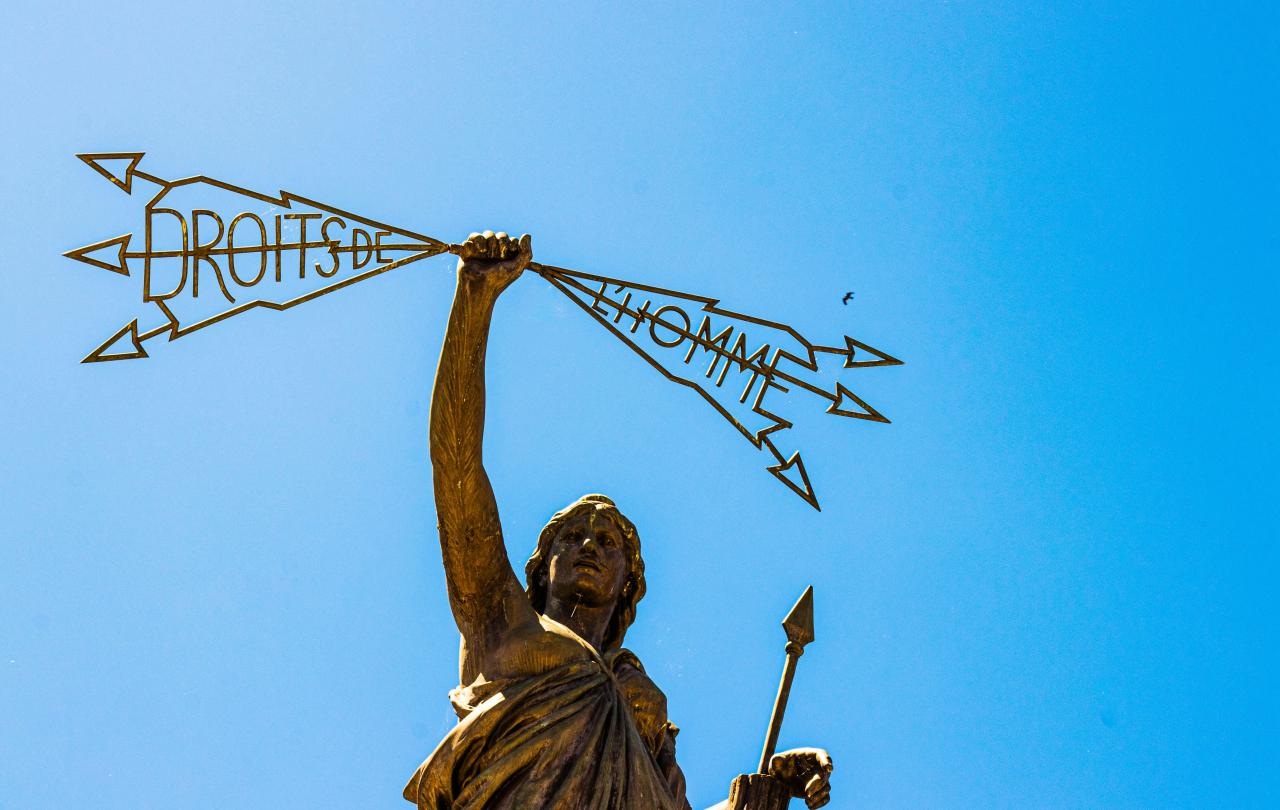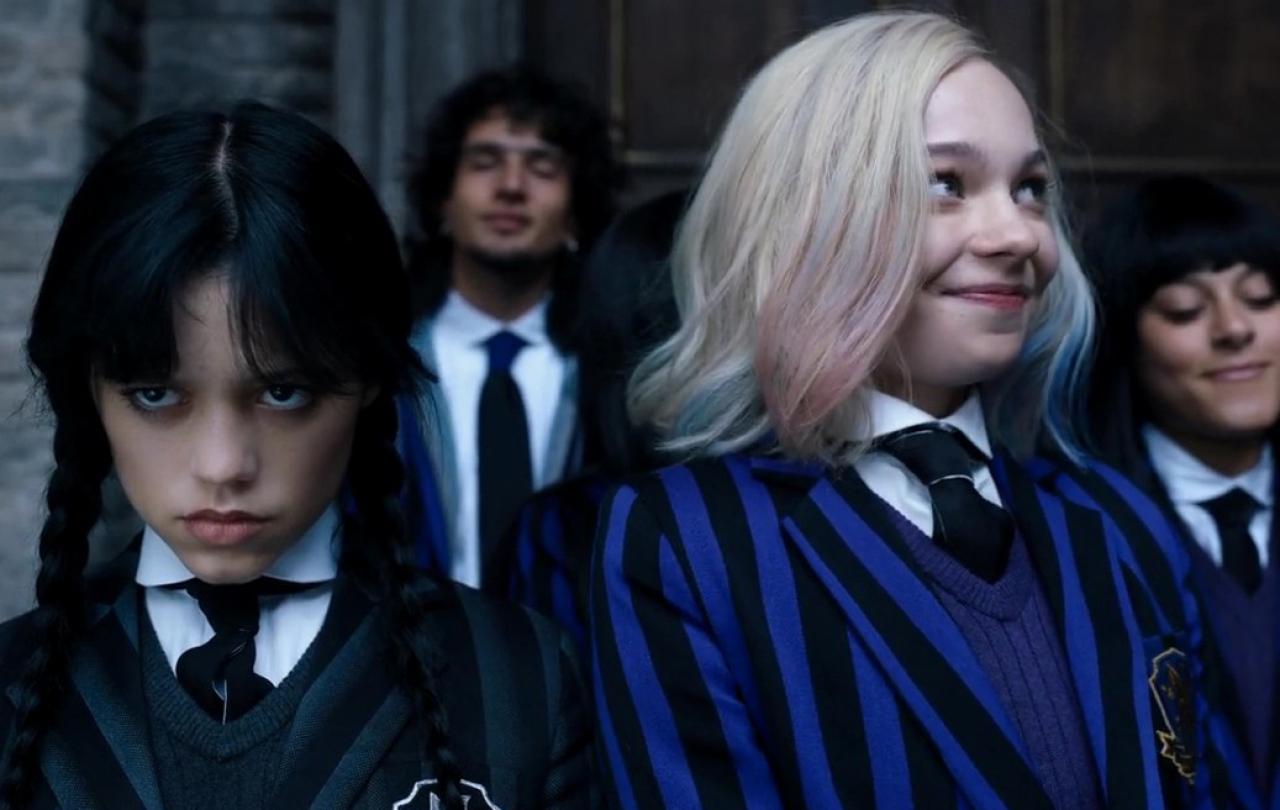
In our networked world old problems, and new ideas to solve them, flash across our minds and screens. It can be a hectic and dis-orientating feeling that occurs when we try to make sense of it all. Whether it's the global order changing or yet another injustice occurring.
Seeking insights on all this means crossing boundaries, and that’s what over 160 scholars do by sharing with each other. The members of the Global Faculty Initiative (GFI), drawn from all faculties usual in great universities, integrate faith and scholarship through dialogues. They examine the themes of justice, order, flourishing and beauty - mixing subject matter expertise in everything from physics to public policy.
The GFI has just published the results of one such dialogue in a book Justice and Rights. Among the contributors is Professor John Coffey. His work explores the history of religion and the big ideas like justice and rights. Recently he talked with GFI coordinator Bethan Willis, on its Justice podcast series. Here’s an extract of the discussion that looks at the ‘genealogy of rights.’
Bethan Willis So, shifting focus now to the question of rights, particularly. So, you talk in your Brief about the genealogy of rights, and in his Theology Brief, Nicholas Wolterstorff makes a case for placing rights at the centre of our understanding of justice, but that's obviously not an uncontested move. And some people would see a focus on rights as problematic, and part of the debate about the legitimacy or the value of rights can sometimes centre around the question of where rights actually come from. So which period in history, which philosophy and vision of human life and justice gives rise to this language. So can you tell us a little bit about that kind of trajectory that you've set out in your Brief , the different points at which people might identify rights as coming to the fore and why that happens and the various interests at play in these discussions of where rights come from?
John Coffey So it can be very confusing if you read the scholarship on this subject because if you listen to someone like Samuel Moyne, he will argue that the human rights revolution of the 1970s really invents human rights or maybe grudgingly the 1940s and the conservative statesmen who created the UN declaration of human rights in that period. Others, of course, would root it in the enlightenment. And I guess this is a classic answer. It's the enlightenment and the French Revolution with its Declaration of Rights of Man and Citizen, which is really at the heart of the story of rights. But then early modernists and medievalists pushback, they see natural rights language, the idea of individual subjective rights that one has simply on the basis of one's humanity. These are distinct from legal rights, but they're individual natural rights that they would see this concept emerging in the Middle Ages with canon lawyers and Juris and so on, and then being embraced by various 17th, 16th, 17th century groups up to Locke.
And I think there are different things going on here. One, of course, is that there are turf wars between historians in different periods who want to draw attention to their period as being really seminal in various ways. People have talked about the revenge of the medievalists, the early modernists and the Renaissance specialists who made so much emphasis on this being a radical break from the dark mediaeval past that mediaevalists have always been keen to push back against that and to point to the mediaeval roots of a lot of modern concepts. But I think there's also more going on here. I think in some ways it's part of a bigger argument about political and to some extent economic liberalism as well, because rights language has been so important for liberals, whether they're talking about politics or talking about economics. So, you have an example of rival genealogies being used for political purposes, if you like, to both problematize and legitimize, right?
BW Your work is focused on the contributions that religious groups have made to politics and ideas. And you particularly reference the Levellers in the 17th century and the abolitionists at the turn of the 18th, 19th century. Can you tell us a bit about the contribution that Christians may have made to the development of rights and particularly to the rights of freedom of conscious thought and belief in particular?
JC Yeah, yeah. I think it's important to emphasize this because there's also been a long tradition of suspicion of rights language among Christians, especially in the wake of the Enlightenment and the French Revolution. I mean, this has obviously been true in the Catholic church in the 19th century where there was deep suspicion of liberalism and the individualism associated with it and rights language was regarded with a great deal of suspicion by many traditionalist Catholics. But it's also true in Protestant circles as well, among some high Anglicans. But you could see it in the Dutch Calvinist tradition, they founded an anti-revolutionary party after the French Revolution, which is very critical of the political language which emerges from that event. So, it's interesting to see how historians and intellectual historians in recent decades have recovered what you might call the theological origins of rights talk. And that's true of people like Brian Tierney writing about the mediaeval era and showing the kind of seminal influence of various mediaeval theorists of natural law, but also natural rights.
And certainly, when you get to the period I'm most familiar with from the 17th century onwards, groups like the Levellers are not just talking about native rights or legal rights that they have as Freeborn Englishmen. They're also talking about universal natural human rights that individuals have on the basis of their humanity. And it's in that period in the 17th century that people begin really for the first time to talk about freedom of religion as a natural right. I mean, you don't see that in the Middle Ages. It's a development that emerges within particularly radical Protestantism in the 17th century. Though interestingly, it's also tied to the idea of duties. So because we have a duty to worship God according to our conscience, consciences must be left free and the individual must have a natural right to worship God according to their conscience, because otherwise they wouldn't be able to please God if they just follow the dictates of the state or the state church that they wouldn't be able to worship in a way that's pleasing to God. So, it is interesting the way the argument works. It's theistic grounded in a sense, but it applies not just to Christians, it applies to other kinds of religious worship, to Jews, to Muslims, to heathens and so on.
And you can see more widely a theological grounding for rights in figures like Locke. And that's encapsulated, obviously famously in the Declaration of Independence, Thomas Jefferson drafted in 1776, that ‘all men are created equal and endowed by their creator with certain inalienable rights’. So, this idea that we have certain rights that we cannot transfer over to the state, that we can alienate them over to the state, they're inalienable, and we have a solemn responsibility before God to protect them. So yeah, I mean, it's certainly by the 18th century, this rights language is absolutely flourishing within Protestant circles, and you can see it being taken up quite significantly in the abolitionist movement in the 1780s, though people are also shying away from it in the 1790s because of the French Revolution and Tom Payne's rights of man and so on. But if you read 19th century American religious abolitionists, people like Frederick Douglas or William Lloyd Garrison or others, they're using the language of natural rights, pretty insistently.
BC And it's often to articulate the kind of victim's perspective, isn't it, to defend the weak against the mighty and to say there's a bigger kind of justice that is beyond the state or the law. Is that right? Can you tell us a bit about how that works?
JC Yeah, no, I think that's absolutely right, and it's one reason why we should be wary about just tossing, tossing rights language out as some kind of secular poisoning of the, well, a, it does have some deep roots in Christian thought, but it also, rights language is also designed as one of the weapons of the weak, if you like. It's a way to defend those whose claims are often ignored and to assert their human dignity. So, it's why it gets taken up so much by religious minorities, by those who are pushing for widening the vote and suffrage maybe to all men, maybe eventually to women. The anti-slavery movement is using it, and of course, by the 20th century, the Civil Rights movement.
BC But as you said, Wilberforce himself doesn't really use this language much, partly because the arenas he's speaking in and partly because of these associations with the French Revolution. Is that right?
JC Yeah, and if you look in the 1790s, it's interesting because it's from that period really the language of left and right starts to emerge, and those on the right are very much concerned about law and order. They look across at France and they see disorder and the guillotine and regicide and Civil War and the exile of Catholic priests and so on, and it's extremely alarming for them. So, the emphasis very much shown law and order, and they become extremely alarmed by the way that rights language has been used to undermine order. So, it's classically articulated at that divide between Edmund Burke on the one side and Tom Payne on the other. What's interesting in the British context, is you'll find sort of devout Protestant Christians on both sides of that. So, Wilberforce would be very much on Burke's side in this argument, but the founder of the London corresponding society in the 1790s, a man called Thomas Hardy, he's actually a devout Scottish Calvinist, and he's absolutely on board with this rights language. And so different religious groups will be divided over this.
Follow the rest of John and Bethan's conversation on the GFI podcast.
Global Faculty Initiative resources
Justice & Rights is published by Langham Publishing. See the link below to order.
The Justice series on the GFI Podcast features six episodes. Listen on Spotify.
Explore the GFI matrix of academic subjects and themes.





